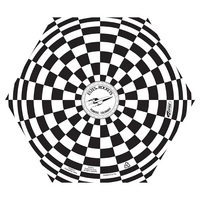Rockets
What is a Flying Model Rocket?
Estes flying model rockets are activity kits designed of lightweight materials such as paper tubing, balsa wood and plastic. Fins attached to the body tube help provide guidance and stability. An engine mount assembly holds the engine in place during rocket flight in most models
Is Model Rocketry Safe?
Yes, Estes rockets have an amazing safety record, with over 60 years and 500 million successful launches! We rigorously test each and every product to comply with state and national standards. Model rocketry is recommended for those ages 10 and above with parental supervision suggested for kids under age 12.
Review the NAR (National Association of Rocketry) Model Rocketry Safety Code
How Do I Get Started?
The easiest entry point into the fun and exciting world of Estes model rocketry is to purchase an Estes Launch Set. Each launch set contains a rocket (or two) and a complete, high tech Estes launch system. In addition to the fun of building, launching and recovery of your own model rocket, Estes flying model rockets have significant STEM educational value. STEM stands for Science, Technology, Engineering and Math and model rocketry can foster an early interest in STEM related subjects, which can lead to exciting careers in engineering.
|
What is included in a Launch Set? |
 |
|
What is not included? |
|
How Does a Model Rocket Work?
The Estes model rocket is propelled into the air by an electrically ignited model rocket engine. After its acceleration, the rocket continues upward emitting tracking smoke as it coasts. At the rocket’s peak altitude (also known as apogee), a recovery device, such as a parachute or streamer, is deployed to return the rocket gently to earth. The rocket can then be prepared for another flight.
Model Rocketry is recommended for ages 10 to adult. Adult supervision is suggested for those under 12 years of age.

What is a Model Rocket Engine?

Estes model rocket engines are used to thrust a model rocket into the air. They are factory-assembled and comply with the code requirements of the National Association of Rocketry. They are single use and range in power from A to F sizes. The engine is started using an electrical launch system that is powered by alkaline batteries.


 |
 Rocket engines come in different sizes and are used to propel different sized model rockets. See the Model Rocket Performance Engine Chart for more information. |
Where to Launch Model Rockets
The chart below tells you what size field to use for each size engine. For launch information look at the “NAR Model Rocket Safety Code”.
You should always check with your local city government for any special regulations that may apply to your area. Generally speaking, you can fly most Estes model rockets in a clear area the size of a football or soccer field. Launch in little or no wind, and make sure there is no dry grass close to the launch pad or in the flying field. Each engine size is designated by a letter and is up to twice as powerful as the letter before it.



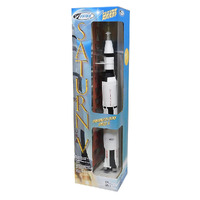
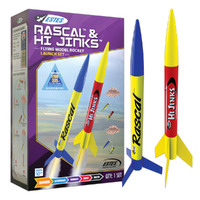
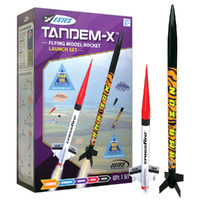
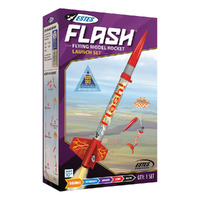
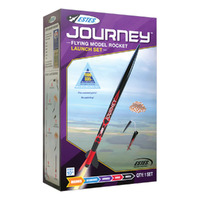
![Estes Riptide Beginner Model Rocket Launch Set [1403]](/assets/thumb/EST-1403X.jpg?20240408042417)
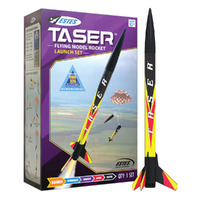
![Estes Leo Space Train Advanced Model Rocket Kit (18mm Standard Engine) [7285]](/assets/thumb/EST-7285.jpg?20240407224552)
![Estes Tazz Advanced Model Rocket Kit (18mm Standard Engine) [7282]](/assets/thumb/EST-7282.jpg?20231016174626)
![Estes 18mm Standard Engine C5-3 (3 ea) (UN0432 1.4s DG) [1617]](/assets/thumb/EST-1617.png?20220906133321)
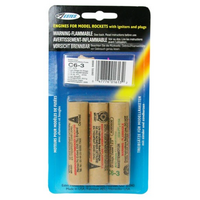
![Estes 18mm Standard Engine C6-7 (3 ea) (UN0432 1.4s DG) [1615]](/assets/thumb/EST-1615.png?20230412134428)
![Estes 18mm Standard Engine B4-2 (3 ea) (UN0432 1.4s DG) [1601]](/assets/thumb/EST-1601.png?20230412105059)
![Estes 18mm Standard Engine B6-4 (3 ea) (UN0432 1.4s DG) [1606]](/assets/thumb/EST-1606.png?20230412132508)
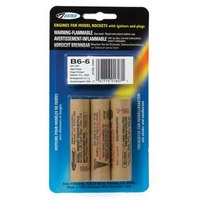
![Estes 13mm Mini-Engine A3-4T (4 ea) (UN0432 1.4s DG) [1507]](/assets/thumb/EST-1507.png?20230412104735)
![Estes 18mm Standard Engine 1/2A6-2 (3 ea) (UN0432 1.4s DG) [1593]](/assets/thumb/EST-1593.png?20230412105320)
![Estes 24" Parachute Model Rocket Accessory [2271]](/assets/thumb/EST-2271.jpg?20230412115615)
![Estes 15" Parachute Model Rocket Accessory [2265]](/assets/thumb/EST-2265.jpg?20230412120310)
![Estes Recovery Wadding (75 squares) Model Rocket Accessory [2274]](/assets/thumb/EST-2274.jpg?20240408023405)
![Estes 9" Parachute Model Rocket Accessory [2268]](/assets/thumb/EST-2268.jpg?20230412104851)
